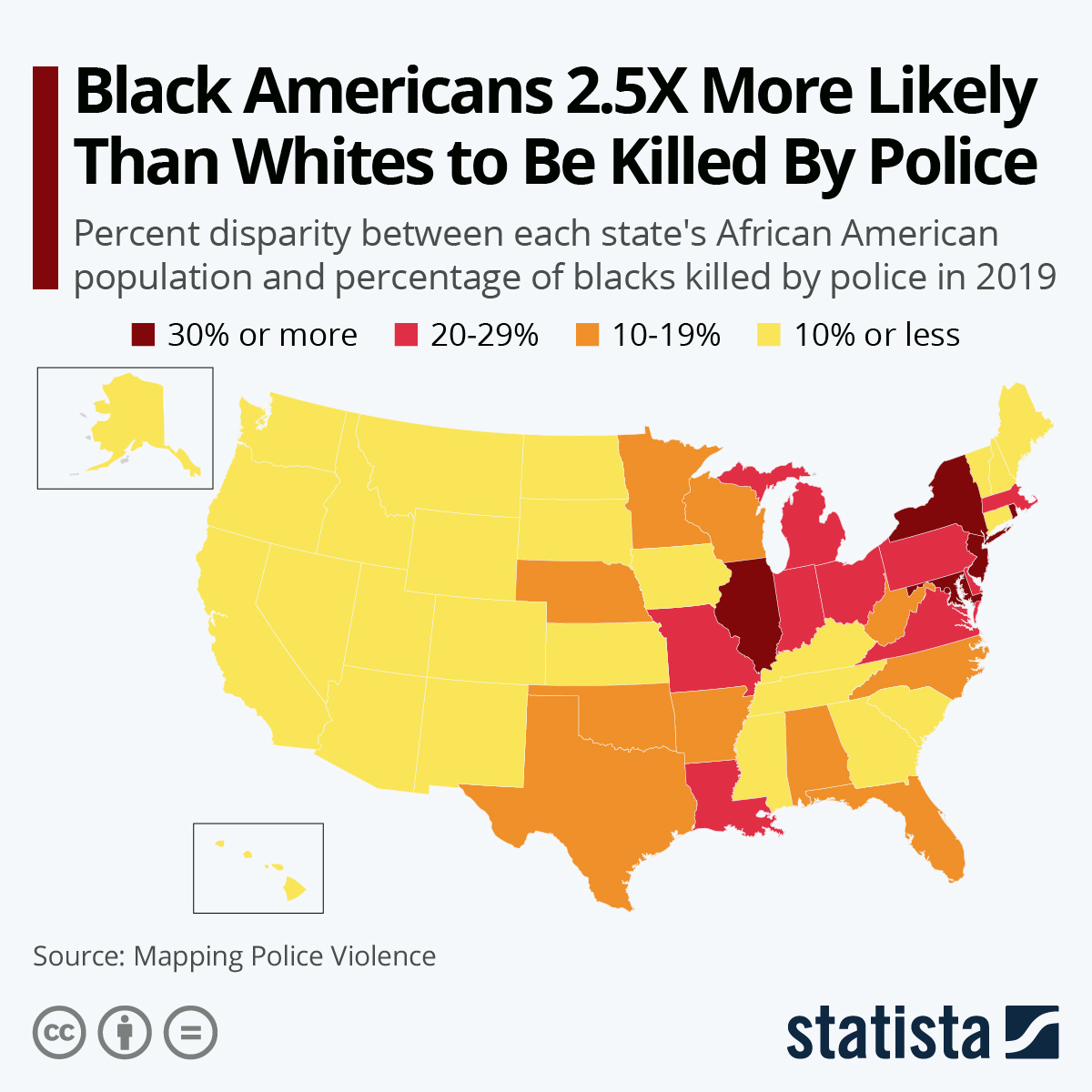Protests around the United States are boiling over after Minneapolis man George Floyd was killed by police. Floyd, accused of using a counterfeit $20 bill, had his neck compressed by an officer’s knee while in handcuffs for roughly nine minutes before later dying. Other recent instances of racism against African Americans in the country have led to massive protests against police brutality and systemic, institutional racism that many feel have gone unchecked for decades.
In 2019 data of all police killings in the country compiled by Mapping Police Violence, black Americans were nearly three times more likely to die from police than white Americans. Other statistics showed that black Americans were nearly one-and-a-half times more likely to be unarmed before their death.
Most states’ police forces killed black people at a higher rate per capita than white people, with Illinois, New York and Washington D.C. carrying some of the largest discrepancies by state. D.C., with a black population of nearly 50 percent, had 88 percent of all police killings be against black Americans – a discrepancy of over 38 percentage points. Rhode Island had the largest discrepancy of 44 points, albeit with a much smaller sample size of four police killings in 2019 – two of them being African American.
While much of the western states have smaller discrepancies overall than eastern ones, large cities like Reno, Oklahoma City and Anaheim all had higher police killing rates of black people than the total U.S. murder rate. Others above the U.S. murder rate were St. Louis, Madison, Wis., Scottsdale, Ariz. and two others.
Overall, in 2019, 24 percent of all police killings were of black Americans when just 13 percent of the U.S. population is black – an 11-point discrepancy. Mapping Police Violence also showed that 99 percent of all officers involved in all police killings had no criminal charges pressed against them.





















